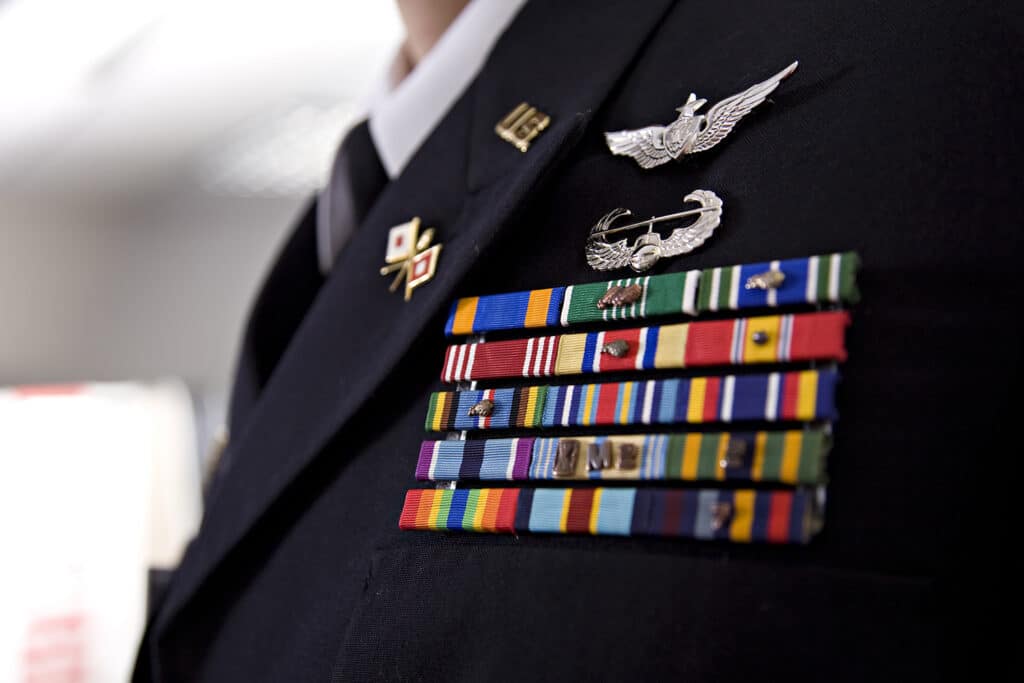Military rules of evidence generally do not allow hearsay statements to be admitted at trial. Hearsay statements are statements made outside of court that are offered as proof of the substance of that statement. There are several exceptions to the hearsay rule, such as statements included in regular business records. Other types of statements are exempted altogether from being considered hearsay.
Military Rule of Evidence 801(d)(1)(B) is one of these exemptions. Until 2016, the rule stated that a prior statement made by a trial witness that is consistent with the witness’s testimony at trial can be admitted to rebut a charge that the witness recently fabricated their testimony or was testifying based upon a recent improper influence or motive. Example: Witness A testifies at trial that “Defendant was driving the car that hit the pedestrian.” Defense attorney cross-examines Witness A about getting a benefit from the Government for his testimony. Government attorney then calls Witness B to testify that Witness A told him that Defendant was the driver before Witness A made his deal with the Government.
This rule was expanded in 2016 to allow prior consistent statements to be introduced to “rehabilitate the declarant’s credibility as a witness when attacked on another ground.” M.R.E. 801(d)(1)(B)(ii) (2016). Prosecutors read this addition to the rule broadly. The Government used it to introduce all prior statements by their witnesses whenever they were subject to cross-examination. It was especially used as the basis to admit videos of the interviews of victims by law enforcement.
In United States v. Finch, the Court of Appeals for the Armed Forces (CAAF) sought to clarify the application of this new portion of the rule. First, the Court emphasized that “it is not the case that under M.R.E. 801(d)(1)(B)(ii), all prior consistent statements are now automatically admissible following impeachment on any ground.” An admissible statement must: (1) be consistent with the trial testimony, (2) the witness’s credibility must have been attacked for a reason other than recent fabrication or recent improper influence or motive, and (3) the prior consistent statement must actually be relevant to rehabilitate the witness’s credibility on the basis on which it was attacked.
These limitations mean that an entire videotaped interview may not be admissible. The judge must determine which statements are consistent with the witness’s trial testimony and address the attack made on cross-examination. Every minor inconsistency does not have to be excluded, but statements that are not consistent with trial testimony and pertain to important facts of the case cannot be admitted.
Example: Witness A testifies at trial that “Defendant was driving the car that hit the pedestrian.” Defense attorney cross-examines Witness A about the passage of time since the accident and his poor memory. Government attorney then calls Witness B to testify that Witness A told him that Defendant was the driver shortly after the accident. This prior statement is consistent with the trial testimony and counters the defense suggestion that Witness A is not remembering correctly by showing that he had said the same when the accident was still fresh in his memory. Government Attorney would not be able to also introduce testimony by Witness B that Witness A told him that Defendant sped up in order to hit the pedestrian if Witness A had not testified to that important fact at trial.
If you or your loved one was convicted of an offense at court-martial, you need someone with experience who knows the most current law. I represented Specialist Finch in this case and I have argued numerous issues in front of appellate courts and CAAF. I have the experience you need. Please contact Bill Cassara at (706) 860-5769 for a free consultation.

